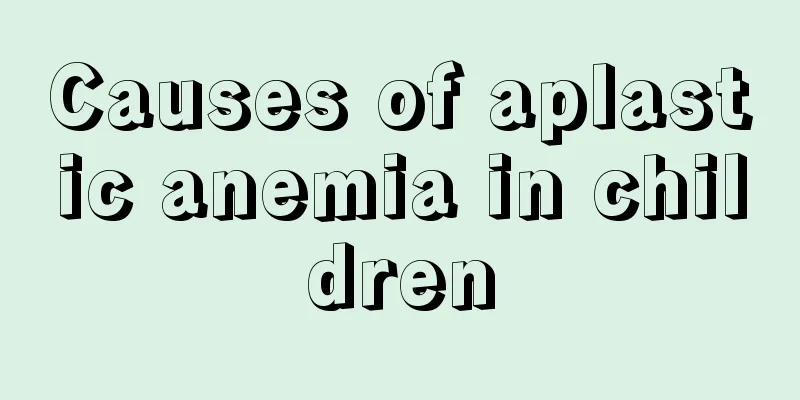What to do if a child has pimples on his eyelids

|
During the development and growth stage of children, special attention should be paid to their physical health. Some babies will have small pimples on their eyelids. Many parents do not pay much attention to it and think it is nothing and will disappear automatically after a while. In fact, this pimple may be a skin disease or a stye. As parents, we must be especially careful and not ignore it. We must seek medical treatment in time. So how to treat pimples on baby’s eyelids? 1The first type of "pimple": skin warts Skin warts are a common skin disease caused by the human papillomavirus (HPV). Commonly known as "warts", skin warts are highly contagious and can appear on any part of the human body. If they grow on the eyelids, they will form small bumps. 2Its characteristics are: protrusions on the skin surface, no tenderness, easy to spread and spread. If found, you need to go to the dermatology department in time. You can refer to the following pictures. What to do if pimples grow on the eyelids 3The second type of "pimple": xanthomas The reason why this type of disease is placed in the second category is that, first, there are more and more patients with xanthomas, and second, people in clinical practice often confuse it with skin warts. Some even name xanthomas as "palpebral xanthoma" in "Baidu Encyclopedia". The author believes that this definition is not standard and can even be said to be wrong. 4 Because there is an essential difference between "xanthomas" and "skin warts". Xanthomas are not actually tumors, nor are they caused by viral infections. Instead, they are the deposition of lipid-like substances in the skin tissue, which is more common in patients with high blood lipids. The lesions often occur near the inner canthus of the upper eyelid and are often bilateral. Skin warts are a skin disease caused by human papillomavirus, which is caused by viral infection and is highly contagious. 5 The traditional method for the treatment of xanthomas is surgery, but there is a possibility of recurrence after resection; the currently recommended treatment method is local injection of heparin. The author has treated many similar patients in clinical practice, and the effect is very good. Unlike surgery, there are no concerns about recurrence and scarring. The picture below is a typical picture of a xanthomas patient. 6The third type of "pimple": stye Stye, also known as sty and hordeolum, is an acute suppurative inflammation of the sebaceous glands or meibomian glands near the eyelash follicles. It is also a disease we often encounter in ophthalmology. Its characteristics are: localized redness, swelling, heat and pain in the eyelid skin, and edema of the adjacent conjunctiva; when pus accumulates locally, yellow pus heads appear. External styes occur in the sebaceous glands at the root of the eyelashes and manifest themselves on the skin surface; internal styes occur in the meibomian glands and manifest themselves on the conjunctival surface. After rupture and drainage of pus, the pain is relieved and the redness and swelling subside; severe cases are accompanied by enlarged and tender preauricular and submandibular lymph nodes, general chills, fever, etc. If it is confirmed to be a stye, timely anti-inflammatory, hot compress and other treatments are required. Depending on the recovery situation and condition, some patients may need surgery. The picture below shows a typical picture of a patient in the acute stage of stye. The fourth type of "pimple": Chalazion Chalazion is a chronic inflammatory granuloma of the meibomian glands caused by obstruction of the meibomian gland drainage duct and retention of secretions. Also known as chalazion. There is only one letter difference between stye and chalazion in their literal meanings, and ordinary people often confuse them. In fact, the key to distinguishing the two lies in the symptoms. Patients with styes will experience obvious pain, while patients with chalazions often do not experience pain; stye is an inflammatory lesion and the mass is often less mobile, while chalazions are chronic inflammatory cysts with good mobility. In terms of treatment, early-stage smaller chalazions can be promoted to dissipate and absorb through hot compresses or physical therapy and massage therapy; large chalazions can be removed surgically, and the cyst wall must be removed completely during the operation to prevent recurrence. The fifth type of "pimple": eyelid tumor The reason why eyelid tumors are classified as the fifth category is mainly due to its clinical specificity and importance. The first four types of "bumps" will either be discovered and treated in time; or they will not be discovered for a short time and will not cause obvious adverse consequences. As for eyelid tumors, many diseases require timely medical treatment, otherwise delayed treatment may cause a series of problems. First: benign tumor The benign eyelid tumors that the author encounters in clinical practice mainly include: capillary hemangioma, cavernous hemangioma, pigmented nevus, etc. Second: Malignant tumor The most common malignant tumors of the eyelid skin include basal cell carcinoma, squamous cell carcinoma, sebaceous gland carcinoma, etc. As for the treatment of eyelid tumors, each disease has a very systematic treatment plan, which cannot be explained one by one here. Once you are diagnosed with a certain type of tumor, you don’t need to panic. You can choose several hospitals and see several doctors. The most important thing is to get a clear diagnosis, actively treat, and not delay the disease. |
<<: Baby has diarrhea and anus is red and painful
>>: What to do if your child has bloating
Recommend
Antipyretic medicine for infants and young children
I believe that many parents are very troubled whe...
Why is myocardial enzyme level elevated in newborns?
For parents who have just welcomed their baby wit...
Why don’t children sleep at night? 8 reasons why your baby won't sleep
If a child does not sleep at night, it will affec...
Five ways to develop children's interpersonal skills
Parents can help their children develop interpers...
One-month-old baby crying
After one month, babies will sleep relatively les...
What should I do if my child has sores?
Children have poor physical resistance and delica...
What to do if children have excessive lead levels? You need to know how to remove lead
If a child has excessive lead levels, he or she m...
What should I do if my baby has a fever of 38 degrees and diarrhea?
When children have frequent fevers, parents will ...
Words for rebellious children
Children will behave rebelliously after they reac...
What to do if children have swollen abdominal lymph nodes
Swollen lymph nodes are a common problem. When th...
Can I take a bath if I have roseola infantum?
Roseola infantum is a common disease. Babies suff...
What to do if your child eats less and loses weight
Parents will be very worried if their children do...
What are the harms of masturbation to teenagers
Adolescents are in an important period of physica...
The white of the baby's eyes are a little yellow. Is jaundice serious?
Newborns have fragile and sensitive bodies and ca...
How can children grow taller?
After comparing their children with other childre...









